
Fundamentals
The Braided Hairstyles, at their most elemental definition, represent a deliberate and purposeful interweaving of three or more strands of hair, creating a singular, cohesive structure. This ancient practice, a testament to human ingenuity and artistry, extends far beyond mere aesthetic arrangement. For Roothea, understanding this practice begins with recognizing its profound connection to the very biology of textured hair, particularly within Black and mixed-race lineages. The unique helical formation of these hair strands, their varied curl patterns, and their inherent strength provide the foundational canvas upon which braiding artistry has flourished for millennia.
The act of braiding, when viewed through the lens of heritage, is not simply a styling choice; it is a fundamental act of care, protection, and cultural preservation. It involves a methodical, often meditative process that secures the hair, minimizing tangling, breakage, and environmental exposure. This protective quality is particularly vital for textured hair, which, due to its structural characteristics, can be more susceptible to dryness and mechanical stress.
The careful tension and deliberate overlap of strands offer a shield, safeguarding the hair’s integrity while allowing for healthy growth and moisture retention. This protective quality has been understood and practiced by ancestral communities long before modern trichology provided its explanations.
Braiding is a deliberate interweaving of hair strands, a foundational act of care and cultural preservation for textured hair.
From the earliest human settlements, the hands that braided hair were not just stylists; they were guardians of ancestral wisdom. They understood the hair’s needs, its vulnerabilities, and its inherent resilience. The basic concept of interlacing hair, a seemingly simple gesture, has evolved into a sophisticated array of techniques, each carrying its own history and purpose. These foundational methods, passed down through generations, speak to a deep, intuitive knowledge of hair as a living fiber, requiring mindful attention and respectful interaction.
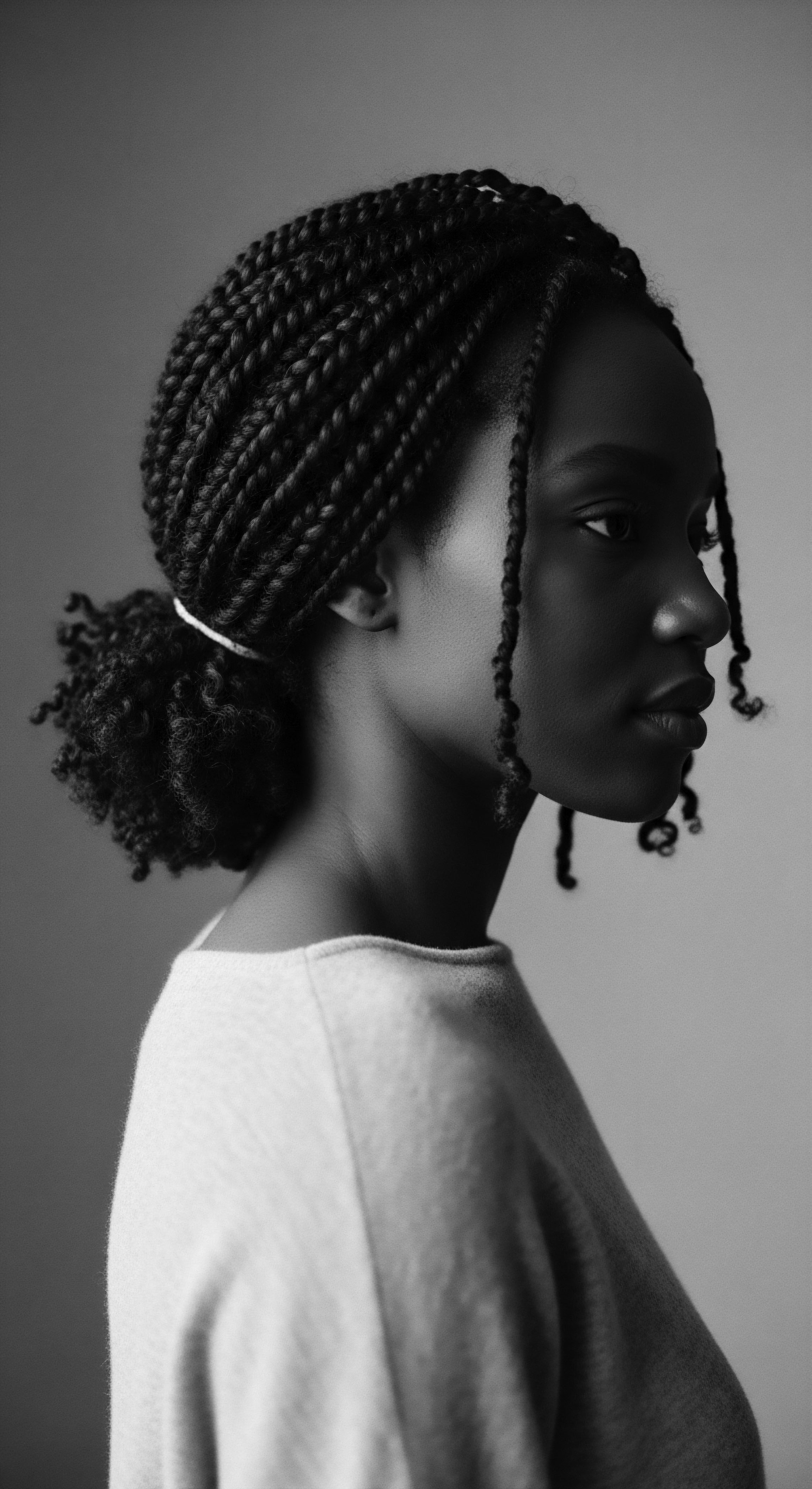
The Elemental Mechanics of Interlacing
At its core, any braided hairstyle involves the division of a section of hair into smaller segments, typically three, which are then crossed over one another in a repetitive pattern. This crossing creates a stable, interlocking system that distributes tension evenly across the hair shaft. The tightness or looseness of the braid, the number of strands utilized, and the direction of the interlacing all contribute to the final appearance and, crucially, the protective efficacy of the style. This structural integrity allows for the hair to be managed, adorned, and preserved in ways that free the wearer from daily manipulation, allowing for the hair to rest and recuperate.
The Braided Hairstyles, even in their simplest forms, stand as a testament to the ancestral understanding of hair as both a physical entity and a spiritual conduit. The careful separation and rejoining of strands mirrors communal bonds, the strength found in unity, and the cyclical nature of life itself. It is a tangible connection to the land, the elements, and the collective memory of those who came before, shaping the understanding of hair as a cherished aspect of identity.

Intermediate
Moving beyond the basic definition, the Braided Hairstyles signify a rich lexicon of cultural expression, a profound language etched into the very fibers of textured hair. This intermediate exploration unveils the intricate layers of meaning and historical context embedded within these styles, particularly within Black and mixed-race communities. Here, the braiding process becomes a living dialogue between the hands of the practitioner and the spirit of the hair, a conversation steeped in ancestral memory and communal identity. The significance of Braided Hairstyles extends into realms of social status, tribal affiliation, spiritual belief, and resistance, making each interlaced strand a carrier of stories.
The meaning of Braided Hairstyles transforms with each historical epoch and geographical location. In ancient African societies, braids were not merely decorative; they were markers of age, marital status, wealth, and power. Specific patterns could denote one’s village, religious beliefs, or even a person’s readiness for war.
This deep communicative function highlights a time when hair was a primary canvas for conveying identity and belonging within a community. The painstaking creation of these styles, often taking hours or days, served as a communal activity, strengthening bonds between individuals and across generations.
Braided Hairstyles are a cultural language, conveying identity, status, and history within Black and mixed-race communities.
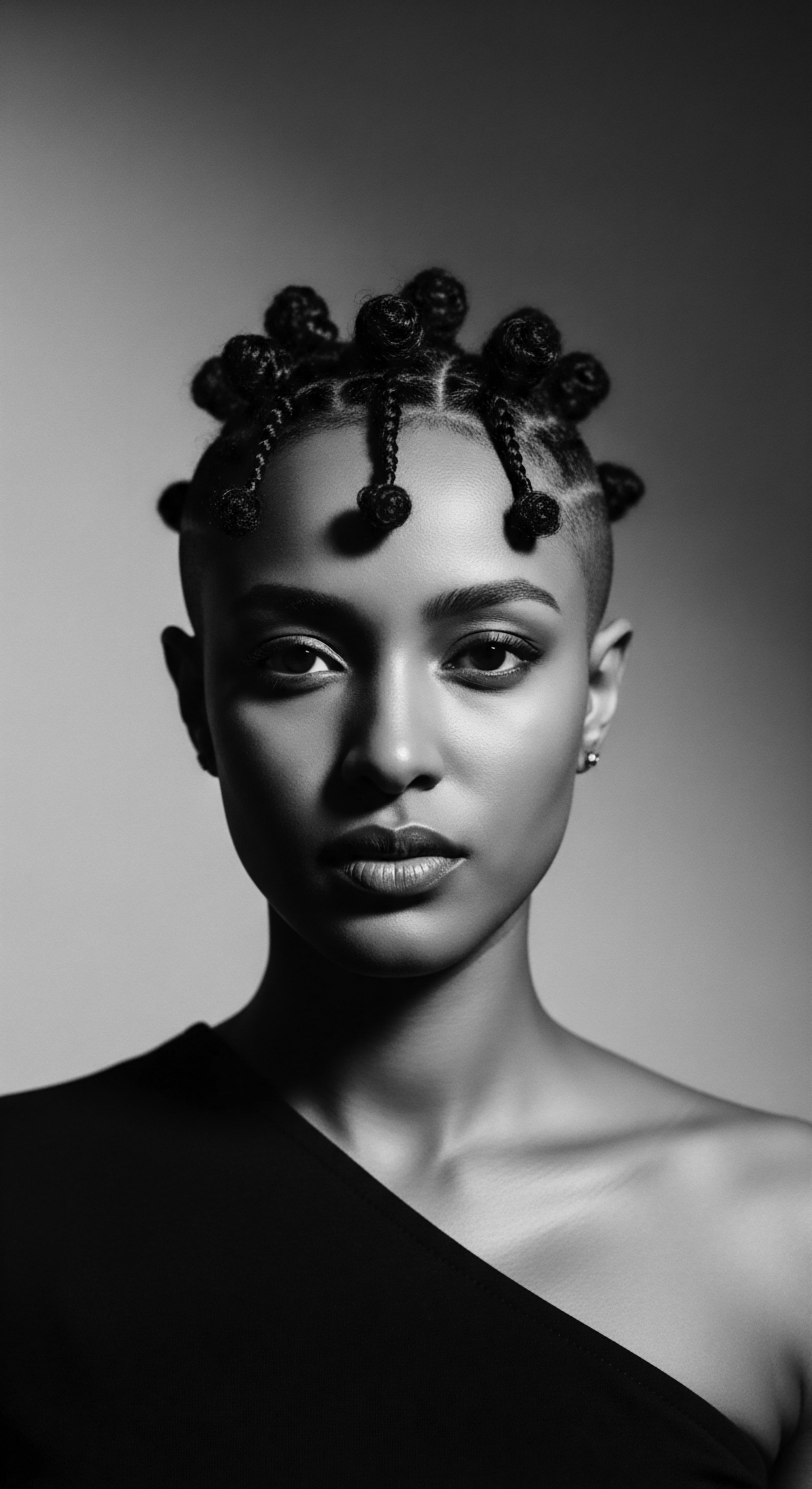
The Legacy of African Braiding Traditions
The historical roots of Braided Hairstyles for textured hair are undeniably planted in the African continent. Archaeological findings and ancient artworks provide compelling evidence of sophisticated braiding practices dating back thousands of years. For example, ancient Egyptian murals depict individuals with elaborately braided hair, and artifacts from the Nok civilization in present-day Nigeria showcase intricate braided styles.
These early expressions demonstrate a deep-seated reverence for hair and a mastery of its manipulation. The tools used, often simple combs made from bone or wood, underscore the ingenuity of these ancestral stylists, who worked with what the earth provided.
The Transatlantic Slave Trade, a devastating rupture in the fabric of African life, could not erase the deep-seated heritage of Braided Hairstyles. Instead, these practices became a clandestine form of resistance, a silent language of survival. Hair was braided with rice grains and seeds, serving as maps to freedom or as provisions for arduous journeys.
This hidden functionality speaks to the profound adaptability and resilience of cultural practices in the face of immense adversity. The simple act of braiding transformed into a powerful act of defiance, preserving identity and hope when all else was stripped away.
Consider the historical significance of cornrows, a particular form of braiding where the hair is braided flat against the scalp in rows. The name itself, derived from their resemblance to rows of corn in a field, speaks to an agricultural connection, grounding the style in the land and sustenance. Cornrows were not only protective but also highly symbolic. During slavery, different patterns could communicate escape routes or coded messages among enslaved people.
This specific historical example, often passed down through oral traditions, underscores the Braided Hairstyles’s role as a silent yet potent form of communication and cultural survival. The profound adaptability of these styles allowed them to persist and transform, becoming symbols of heritage and enduring spirit across the diaspora.
- Adornment ❉ Braids served as a canvas for beads, cowrie shells, and other natural elements, signifying status or spiritual connection.
- Protection ❉ These styles shielded hair from harsh environmental conditions, preserving moisture and preventing damage.
- Communication ❉ Specific patterns conveyed marital status, tribal affiliation, age, or even coded messages for escape.
- Community ❉ The act of braiding often involved communal gatherings, fostering bonds and passing down traditions.
| Aspect Functionality |
| Historical Context (Pre-Diaspora) Tribal identification, spiritual connection, social status, protection from elements. |
| Contemporary Relevance (Post-Diaspora) Protective styling, fashion statement, cultural pride, personal expression. |
| Aspect Technique |
| Historical Context (Pre-Diaspora) Hand-crafted with natural tools, often involving communal effort and ritual. |
| Contemporary Relevance (Post-Diaspora) Varied tools (combs, extensions), professional salons, continued communal practice. |
| Aspect Symbolism |
| Historical Context (Pre-Diaspora) Indicators of age, marital status, wealth, specific ancestral lineage. |
| Contemporary Relevance (Post-Diaspora) Identity affirmation, resistance against Eurocentric beauty standards, celebration of heritage. |
| Aspect The enduring power of Braided Hairstyles lies in their continuous adaptation while preserving core ancestral meanings. |
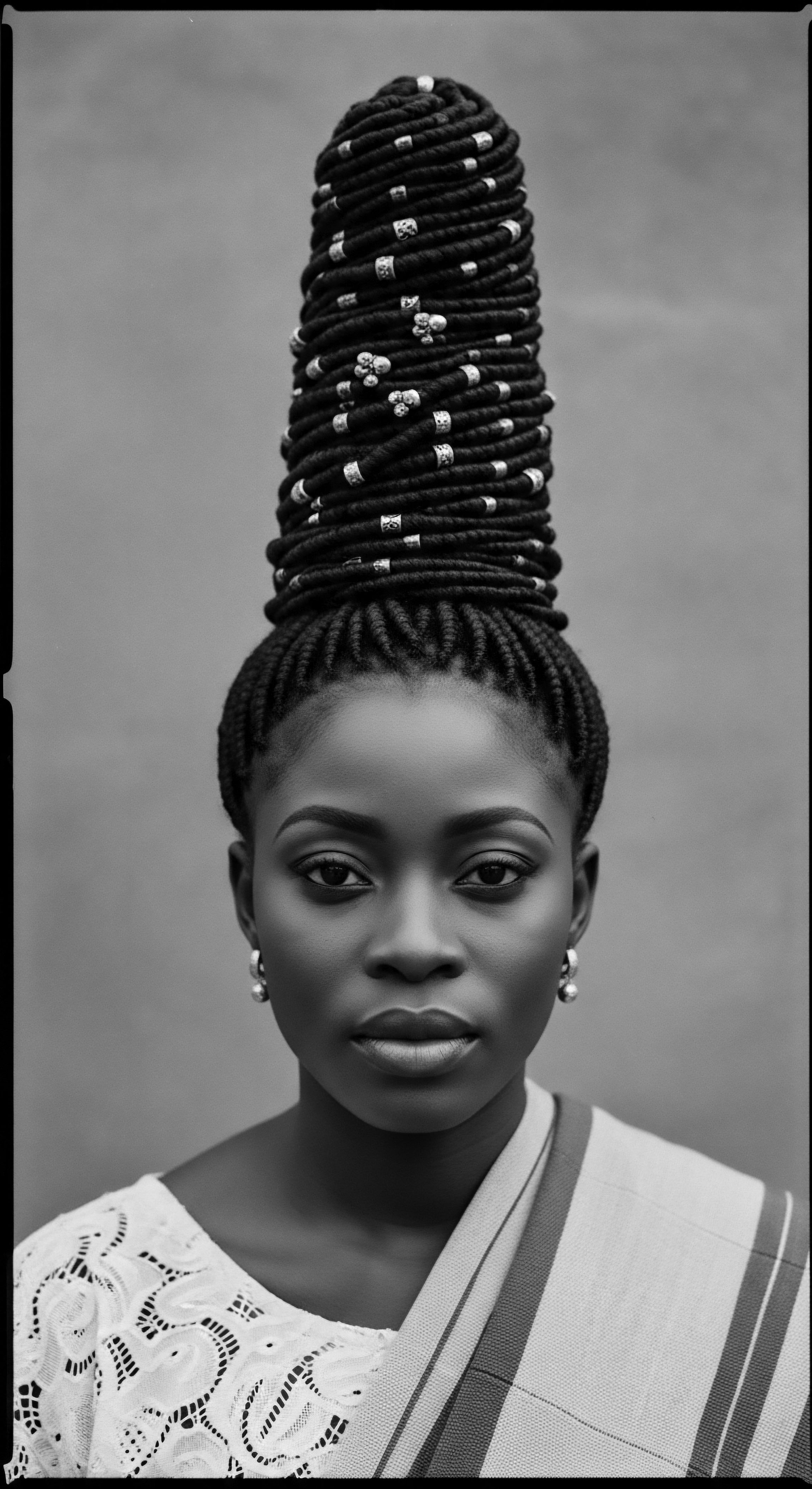
Academic
The Braided Hairstyles, within an academic framework, represent a complex interplay of cultural anthropology, material science, socio-linguistics, and identity studies, particularly concerning textured hair. This deep exploration delves into the scientific underpinnings of why braiding is uniquely suited for Black and mixed-race hair, its role in the perpetuation of ancestral knowledge systems, and its profound impact on the psychological and social landscapes of diasporic communities. The elucidation of Braided Hairstyles from this vantage point demands a rigorous examination of historical trajectories, scientific principles, and lived experiences, moving beyond anecdotal understanding to a robust, evidence-based interpretation.
The delineation of Braided Hairstyles’ meaning at this level necessitates an understanding of hair morphology. Textured hair, characterized by its elliptical cross-section and varying degrees of curl and coil, possesses unique structural properties. The natural bends and twists in the hair shaft create points of weakness, making it more prone to breakage when manipulated dry or subjected to constant friction. Braiding, from a scientific perspective, mitigates these vulnerabilities.
By gathering individual strands into a larger, cohesive unit, the mechanical stress is distributed across multiple fibers, significantly reducing individual strand tension and exposure. This creates a macro-structure that is more robust than the sum of its individual components, validating centuries of ancestral practice with modern scientific understanding.
Moreover, the Braided Hairstyles act as a crucial mechanism for moisture retention. Textured hair’s open cuticle structure can lead to faster moisture loss. When hair is braided, the surface area exposed to the environment is reduced, thereby minimizing evaporative water loss.
This principle underpins the ancestral practice of sealing moisture into braided styles using natural oils and butters, a practice now supported by cosmetic chemistry. The scientific explanation of this phenomenon aligns seamlessly with the holistic wellness advocate’s emphasis on natural care, demonstrating a profound continuity between ancient wisdom and contemporary understanding.
Braiding structurally protects textured hair by distributing tension and reducing moisture loss, affirming ancient practices through modern science.
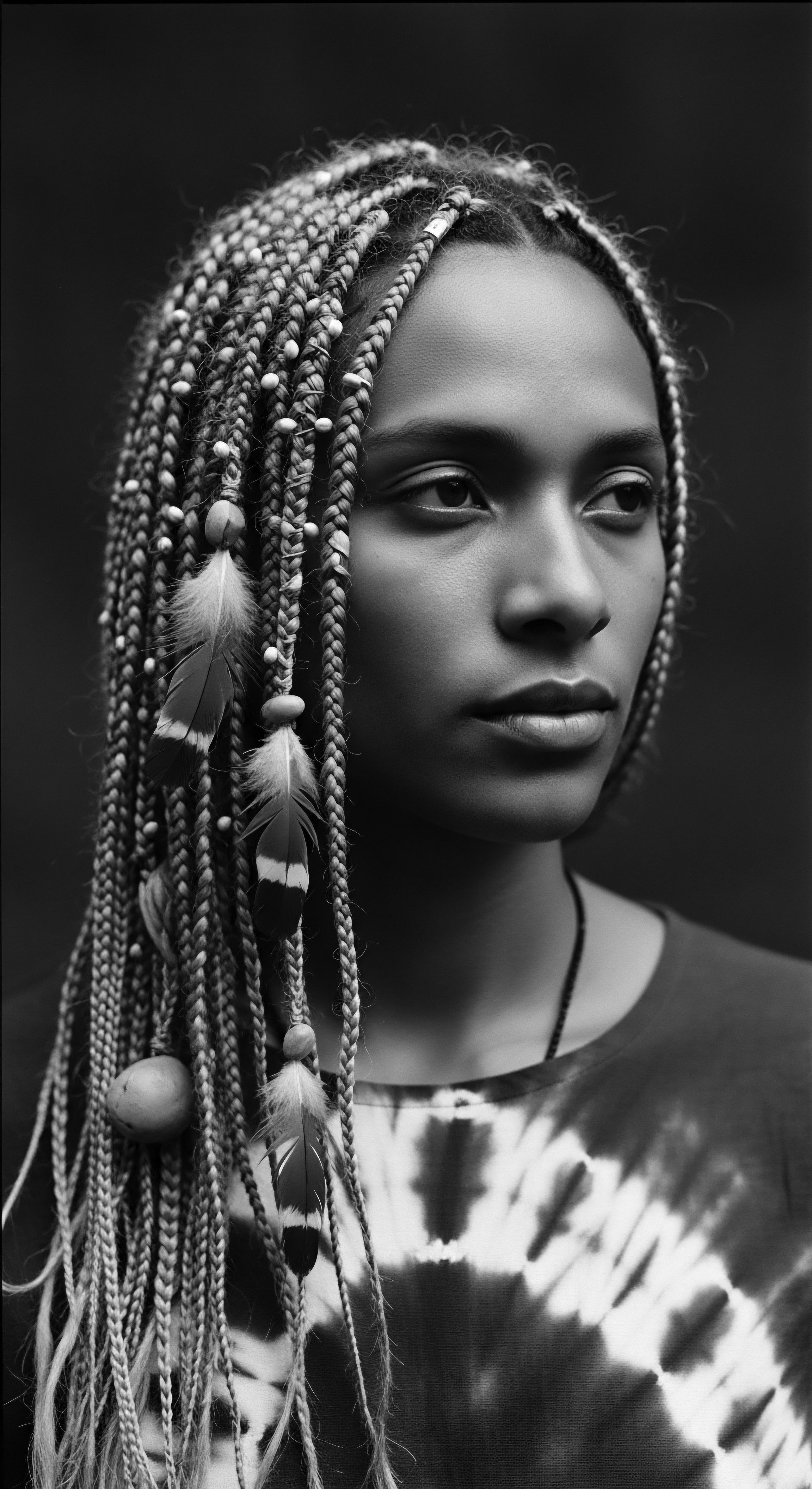
The Socio-Historical and Psychological Dimensions
The academic investigation of Braided Hairstyles also confronts their role as sites of both celebration and contention within the African diaspora. For centuries, these styles have been subjected to scrutiny, prejudice, and systemic discrimination in Western societies. This phenomenon is well-documented in sociological studies examining the intersection of race, appearance, and professional opportunities. For instance, the enduring struggle for legislative protection, such as the CROWN Act (Creating a Respectful and Open World for Natural Hair) in the United States, speaks volumes about the historical and ongoing discrimination faced by individuals wearing Braided Hairstyles in schools and workplaces.
This legislation, which prohibits discrimination based on hair texture and protective hairstyles associated with race, underscores the societal pressure to conform to Eurocentric beauty standards and the resilience required to maintain cultural hair practices. The very necessity of such laws reveals the deeply ingrained biases against hair forms that deviate from a narrow, dominant aesthetic, solidifying Braided Hairstyles as a battleground for identity and acceptance.
A compelling case study illustrating the profound cultural and psychological significance of Braided Hairstyles comes from the scholarship surrounding the Maroon communities of the Caribbean and the Americas. These communities, formed by formerly enslaved Africans, meticulously preserved and innovated upon their ancestral braiding traditions. For instance, in Suriname, the Ndyuka Maroons continued to utilize specific braiding patterns not only for aesthetic and protective purposes but also as a form of non-verbal communication and historical record-keeping. Anthropologist Sally Price, in her extensive work on Maroon cultures, documents how particular braided designs could convey messages about lineage, social standing, or even historical events within the community.
The act of braiding became a living archive, a way to transmit knowledge and maintain cultural cohesion in the face of extreme adversity. This deep, functional integration of Braided Hairstyles into the very fabric of their society exemplifies their significance beyond mere adornment, marking them as vital instruments of cultural continuity and communal memory (Price, 1993). The meaning of Braided Hairstyles, therefore, extends into the very preservation of an entire people’s history and collective identity.
The psychological impact of wearing Braided Hairstyles is also a rich area of academic inquiry. For many Black and mixed-race individuals, wearing braids is an affirmation of identity, a connection to ancestry, and a declaration of self-acceptance. Studies in social psychology have explored how the freedom to wear natural and braided styles contributes to positive self-esteem and a stronger sense of belonging.
Conversely, the historical and ongoing pressure to alter or conceal these styles can lead to feelings of shame, alienation, and a disconnect from one’s cultural heritage. The deliberate choice to wear Braided Hairstyles, therefore, often represents an act of self-love and cultural pride, a reclaiming of ancestral beauty in a world that has historically sought to diminish it.
The intricate delineation of Braided Hairstyles involves recognizing their dual existence as both a practical hair management solution and a powerful cultural artifact. The specification of various braiding techniques—from the foundational three-strand plait to complex cornrows, twists, and locs—each carries a distinct lineage and purpose. These methods are not static; they are living traditions, constantly evolving while retaining their core ancestral integrity. The explication of these variations often reveals regional differences in African braiding practices that were carried across the diaspora and adapted to new environments, creating a vibrant, dynamic hairscape.
The statement that Braided Hairstyles are a cornerstone of textured hair heritage is not an overstatement; it is a meticulously supported academic assertion. Their designation as a protective style is validated by scientific understanding of hair fiber mechanics. Their role as a communication system is affirmed by anthropological studies of historical African and diasporic communities.
Their significance as a symbol of identity and resistance is evident in contemporary social movements and legislative efforts. This comprehensive understanding of Braided Hairstyles allows for a truly holistic appreciation of their enduring value and profound cultural import.
The interconnections across fields are clear. Hair science explains the physical benefits; anthropology details the cultural uses; sociology documents the societal impact; and psychology explores the personal significance. All these threads converge to paint a full picture of Braided Hairstyles as a living, breathing cultural phenomenon, deeply rooted in the past yet vibrantly present and continually shaping the future of textured hair experiences.

Reflection on the Heritage of Braided Hairstyles
As we conclude this exploration of the Braided Hairstyles, we find ourselves standing at the confluence of ancient wisdom and contemporary expression, deeply immersed in the ‘Soul of a Strand’ ethos. The journey through their elemental biology, their tender care, and their unbound helix reveals more than just a styling technique; it unveils a profound meditation on textured hair, its heritage, and its enduring spirit. Braided Hairstyles are not merely a collection of interlocked strands; they are living archives, each twist and turn holding the whispers of ancestors, the resilience of generations, and the vibrant stories of Black and mixed-race communities.
The legacy of Braided Hairstyles is a testament to an unbroken chain of knowledge, passed from hand to hand, heart to heart, across continents and centuries. It speaks to an innate understanding of hair as sacred, as a crown that connects us to the earth and the heavens. This heritage is not static; it is a flowing river, constantly refreshed by new expressions and interpretations, yet always drawing from the deep well of ancestral practices. To wear braids today is to carry forward a tradition of strength, beauty, and cultural affirmation, a quiet yet powerful declaration of self in a world that often seeks conformity.
In every meticulously formed plait, we can discern the ingenuity of those who first learned to nurture and protect textured hair, utilizing what the earth provided. In every communal braiding session, we witness the continuation of bonds forged through shared experience and mutual care. And in every bold, unapologetic display of Braided Hairstyles, we see the future being shaped, one strand at a time, towards a world that truly celebrates the diverse splendor of all hair textures. The Braided Hairstyles remain a powerful symbol of identity, a bridge between past and present, a living embodiment of the enduring spirit of heritage.
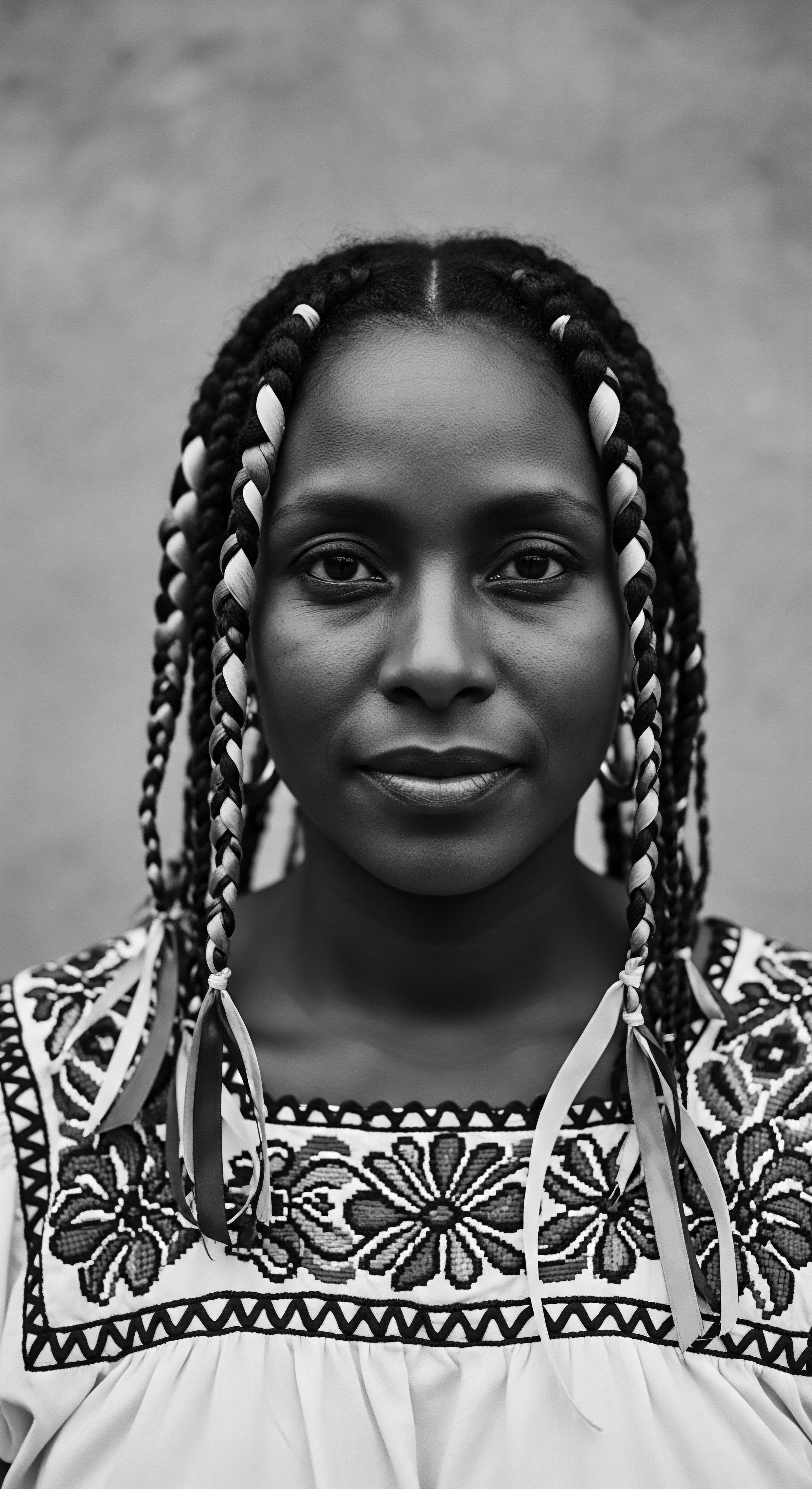
References
- Byrd, A. D. & Tharps, L. D. (2014). Hair Story ❉ Untangling the Roots of Black Hair in America. St. Martin’s Press.
- Banks, I. (2000). Hair Matters ❉ Beauty, Power, and the Politics of Hair. New York University Press.
- Mercer, K. (1994). Welcome to the Jungle ❉ New Positions in Black Cultural Studies. Routledge.
- Price, S. (1993). Art of the Ndyuka Maroons. University of Florida Press.
- Tate, S. (2007). Black Beauty ❉ Aesthetics, Culture, and Identity. I.B. Tauris.
- Hall, R. (2013). The Hair That Got Away ❉ A Cultural History of Black Hair in the West. Duke University Press.
- Ebony, N. (2020). Hair ❉ A Cultural History. Bloomsbury Academic.
- Hunter, L. (2017). Beauty and the Beast ❉ The Co-option of Black Women’s Hair and Bodies in Advertising. Lexington Books.
- Opoku, A. A. (2000). African Traditional Religion ❉ An Introduction. Longman.
- Patton, T. O. (2021). Black Hair ❉ A Cultural and Historical Perspective. Routledge.
